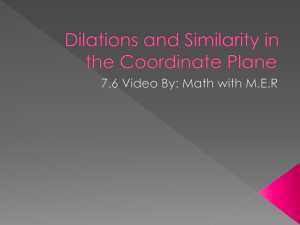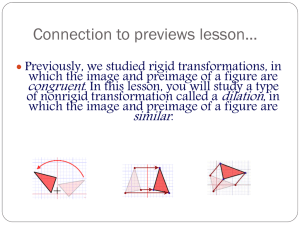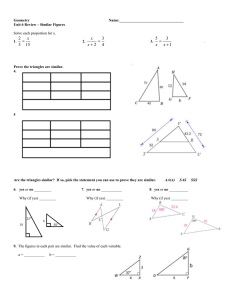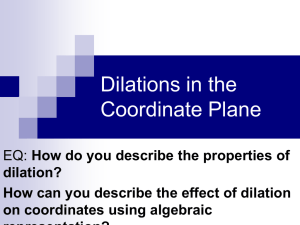Geometry Dilations: Transformations & Scale Factors
advertisement
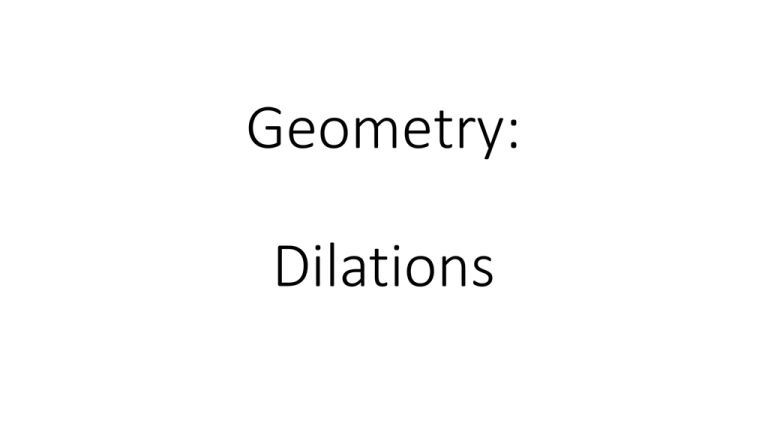
Geometry: Dilations We have already discussed translations, reflections and rotations. Each of these transformations is an isometry, which means the image is congruent to the preimage. In a dilation the image is similar to the preimage. A dilation centered at point C with a scale factor of k, where can be defined as follows: 1. The image of point C is itself. That is, C _____ ' C 2. For any point P other than C, the ____________________________ point P' is on CP and CP' k CP k CP NOTE: If 0 k 1 , then the dilation is a ____________ contractio n If k 1, then the dilation is an ____________ expansion Why is CPQ ~ CP ' Q ' ? k CP AA / SAS / SSS for similarity ? C C by reflexive CP k CP 1 k CQ k CQ 1 k SAS k CQ PQ // P ' Q ' Why ? CAP Converse Example: Under a dilation, triangle A(0,0), B(0,4), C(6,0) becomes triangle A'(0,0), B'(0,10), C'(15,0). What is the scale factor for this dilation? By the definition , AC' k AC B’(0, 10) 15 k 6 k 15 6 C’(15, 0) A ' B ' k AB Let’s consider why this theorem is true. Since CAB ~ CA' B' by SAS then, CA CA' k CA AB A' B ' 1 k A ' B ' k AB AB A' B ' Example: Line segment AB with endpoints A(2, 5) and B(6, -1) lies in the coordinate plane. The segment will be dilated with a scale factor of 2 5 and a center at the origin to create A ' B '. What will be the length of A ' B '? 2 6 AB A' B ' 2 5 2 5 1 2 13 2 4 5 13 (4) 6 2 2 52 2 13 Example: Under a dilation of scale factor 3 with the center at the origin, what will be the coordinates of the image of point A(3, 4)? point B(4,1)? A ' ( 9 ,12 ) B ' (12 , 3 ) What do you notice about the coordinates of points A and A’ as well as B and B’ in relation to the scale factor? Each coordinate in the image is 3 times the correspond ing coordinate in the preimage. Theorem: If the center of dilation is the origin and the scale factor is k, the coordinates of the point A’, the image of A(x, y), will be __________. (k x, k y )
